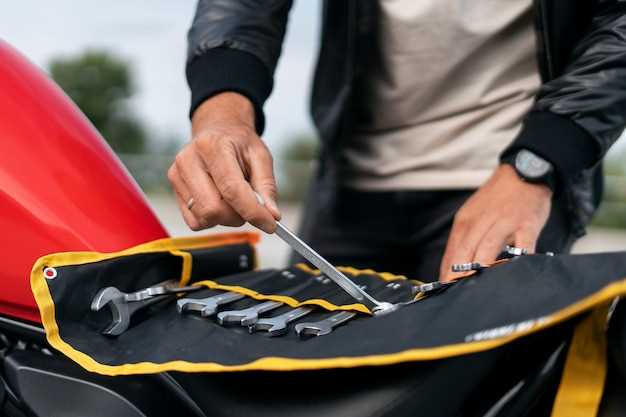
Proper maintenance of your motorcycle and ATV batteries is crucial for ensuring their reliable power supply and longevity. A well-maintained battery not only performs better but also extends the life of your vehicle, allowing you to enjoy countless adventures without unexpected interruptions. Understanding the essential steps for battery care can significantly enhance the performance of your ride.
Maintaining a battery involves regular checks and preventative measures that can protect against common issues such as sulfation and corrosion. Regularly inspecting battery terminals and keeping them clean helps ensure optimal energy transfer. Additionally, monitoring the electrolyte levels and charging status prevents the battery from dying prematurely. These small yet essential tasks contribute significantly to consistent battery power and overall performance.
In this article, we will delve into effective strategies for maintaining your motorcycle and ATV batteries, equipping you with the knowledge needed to keep your rides fueled with uninterrupted power. We’ll cover everything from routine checks to best practices for charging, ensuring that your battery remains in top condition throughout its lifespan.
Inspections: How to Identify Signs of Wear and Damage
Regular maintenance of your motorcycle and ATV batteries is essential for ensuring optimal power and performance. One key aspect of this maintenance is conducting thorough inspections to identify any signs of wear and damage.
Begin your inspection by examining the battery casing for cracks or leaks. A damaged casing can lead to electrolyte leakage, which not only affects battery power but also poses safety risks. If you notice any deformation or swelling, it may be an indication that the battery is nearing the end of its life.
Next, inspect the terminals for corrosion, which can hinder the electrical connection. Corroded terminals often appear as a white, powdery substance around the connections. Cleaning these terminals with a mixture of baking soda and water can restore proper connectivity and enhance battery performance.
Additionally, check for loose or frayed cables. Secure connections are crucial for maintaining power delivery. Ensure that all cables are tightly connected and that there are no signs of wear that could compromise their integrity.
Lastly, monitor the battery’s fluid levels if applicable. Low electrolyte levels can significantly affect battery performance. Refill with distilled water if necessary, but avoid overfilling, as this can also lead to damage.
By conducting these inspections regularly, you can effectively identify and address signs of wear and damage, ensuring your motorcycle or ATV battery remains reliable.
Charging Techniques: Keeping Your Battery at Optimal Levels

Proper maintenance of your motorcycle or ATV battery is essential for ensuring it delivers reliable power during your rides. One of the key aspects of battery care is employing effective charging techniques that help maintain optimal battery levels.
Firstly, always use a charger that is specifically designed for your battery type, whether it be lead-acid, AGM, or lithium-ion. Each battery has unique charging requirements, and using the appropriate system prevents damage and maximizes performance.
Secondly, consider utilizing a smart charger equipped with automatic settings. These chargers adjust the voltage and current output based on the battery’s needs, ensuring that it receives just the right amount of power without overcharging. Maintaining a balanced charge can prolong the battery’s lifespan significantly.
Be mindful of charging frequency. Regularly topping off your battery, especially during the off-season, prevents it from dipping to low voltage levels, which can lead to sulfation in lead-acid batteries. Keeping the battery charged at higher levels ensures it remains in optimal condition and ready for use whenever needed.
Furthermore, avoid allowing the battery to completely discharge, as deep discharges can negatively affect its longevity. Develop a charging routine that incorporates checks and balances, such as monitoring voltage levels and using a multimeter to assess the battery’s health.
In conclusion, maintaining optimal battery levels through effective charging techniques is crucial for the performance of your motorcycle and ATV. Implementing proper charging practices not only enhances power delivery but also extends the overall lifespan of your battery, ensuring you have reliable performance on every adventure.
Storage Solutions: Best Practices for Off-Season Battery Care

Proper maintenance of motorcycle and ATV batteries during the off-season is crucial for ensuring their longevity and performance. An effective storage system not only protects the battery but also ensures that it is ready to deliver maximum power when needed.
First and foremost, it’s essential to clean the battery terminals and remove any corrosion. This simple step can significantly enhance the battery’s efficiency when you prepare to use it again. A mixture of baking soda and water can be employed to clean the terminals before rinsing with clean water and drying thoroughly.
Next, consider the environment in which you store the battery. It should be kept in a cool, dry place–excessive heat can lead to fluid evaporation and damage, while extreme cold can reduce the battery’s capacity. Ideally, a temperature-controlled area is best for maintaining the optimal operating conditions.
Regularly checking the battery’s charge level is another critical aspect of off-season care. Storing a battery in a fully charged state helps prevent sulfation, a chemical reaction that can degrade the battery’s health. Use a multimeter to monitor voltage levels and recharge as necessary to maintain a charge above 12.4 volts.
Implementing a trickle charger or smart battery maintainer can also provide significant benefits. These systems automatically adjust the charge level, ensuring your battery remains charged without overloading it. This maintenance strategy is particularly effective during long storage periods.
Lastly, if you are using a lithium-ion battery, it’s essential to check the manufacturer’s guidelines regarding storage. Different battery types may require specific maintenance protocols, so adhering to these guidelines ensures optimal performance.
By following these best practices for battery care during the off-season, you can ensure that your motorcycle or ATV is ready to deliver reliable power whenever the riding season begins again.





